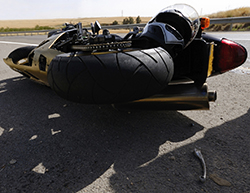 Right To Ride has responded to a Road Safety public consultation on an European Union (EU) strategy to reduce injuries resulting from road traffic accidents.
Right To Ride has responded to a Road Safety public consultation on an European Union (EU) strategy to reduce injuries resulting from road traffic accidents.
The consultation, a survey from the European Commission’s (EC) Energy and Transport states that “Road safety strategies traditionally focus on reducing fatalities. Injuries, however, are overlooked and have become a major health problem. In 2010, about 1 500 000 people were injured on the roads of the European Union, at huge economic and human cost to society.” adding that, “Reducing the number and the severity of road traffic injuries is one of the strategic objectives outlined in the Policy Orientation on Road Safety 2011-2020 and a priority for EU action.”
Therefore the EC say that it is, “Developing a comprehensive strategy of action concerning road traffic injuries and emergency services, with the help of all relevant actors.”
The EC says that initially, “It will seek to find a common understanding of definitions and concepts relating to casualties (in particular, the definition of serious and slight injuries), improve data collection and identify courses of action to improve prevention and intervention, including their socio-economic impact.” and that based on feedback from the first stage of the proposed strategy, “Specific or tailor-made actions might be identified with a view to increasing the accuracy of existing databases on road injuries”.
This initial stage appears to be whether the count of road injuries is accurate.
Questionnaire
The questionnaire asks participants to list references to any studies or documents of relevance to this consultation on injuries resulting from road accidents. If you are aware of any study or document or the organisation, group or association you may be a member of has produced any studies or documents you can forward these to the EC.
At Right To Ride we have forwarded the EC our Northern Ireland Motorcycle Fatality Report 2012, the report is an Indepth Study of 39 Motorcycle Collisions In Northern Ireland between 2004 and 2010 where 41 Motorcyclists were Fatally Injured.
Towards a European Road Safety Area
Meanwhile in the EC document – Towards a European road safety area – Policy orientations on road safety 2011-2020 which is being promoted as EU road safety guidelines 2011-2020, it specifically mentions motorcyclists as vulnerable road users.
Specifically making vulnerable road users – especially motorcyclists – safer by improving communication between authorities and road users, and introducing periodic inspections of motorbikes, mopeds, etc.
The document says that, “The problem of motorcyclists’ safety ” should be addressed through a range of actions, with a view to:
1. Improving awareness of PTW (Powered Two Wheelers – motorcycles – scooters – mopeds) riders by other road users.
2. Encouraging research and technical developments aimed at increasing PTW’s safety and reducing the consequences of accidents, such as standards for personal protective equipment, airbags, the use of relevant ITS applications (e.g. eCall) and progressive installation of advanced braking systems, appropriate anti-tampering measures, etc.
The Commission will propose to extend to PTWs the existing EU legislation concerning roadworthiness testing. Finally, on-going efforts to better adapt road infrastructure to PTWs (e.g. safer guardrails) should also be continued.
3. Encouraging Member States to focus enforcement on speed, drink and driving, helmet use, tampering and riding without a proper PTW licence.
You may be familiar with some of these issues that the EC is already progressing with such as mandatory advanced braking systems and appropriate anti-tampering measures in the proposed EU Regulation that is presently under discussion you may not be aware of these other range of actions.
The problem with these actions is that, although we can simply welcome the on-going efforts to better adapt road infrastructure to PTWs (e.g. safer guardrails,) the issue is what is in the detail for improving awareness of PTW riders by other road users.
While encouraging research and technical developments aimed at increasing PTW’s safety and reducing the consequences of accidents, is welcome what are the details of standards for personal protective equipment, airbags, the use of relevant ITS applications (e.g. eCall) and rather than a concentration on the consequences of accidents a step back to concentrate on looking at the prevention of accidents would be more appropriate.
Of course nobody would deny that enforcement on drink and driving is to be encouraged however perhaps enforcement on speed should be on inappropriate speed, helmet use is more a “Southern” European issue and tampering and riding without a proper PTW licence suggests that there is only an issue with PTW Licences.
Bundle these actions together as “The problem of motorcyclists’ safety” the problem then becomes the motorcyclists acceptance and the problem of throwing out the bath water, baby and all, with any EU proposals on regulation or policy on improving motorcyclists safety.
It’s all a balancing act as all this will not go away, so from Road Safety Consultations to EU Regulations to Road Safety reports, a certain flair to understanding the depth of these issues and how they are interlinked and can be dealt with, without ending up looking at an empty bath and sitting on a heavily regulated motorcycle.
View our response and Links at Right To Ride EU – Click Here
.


